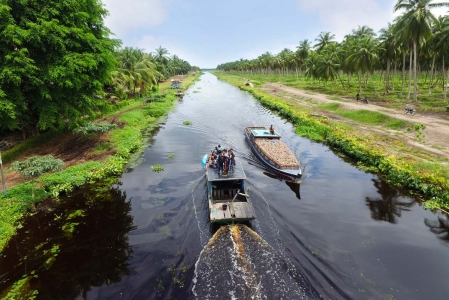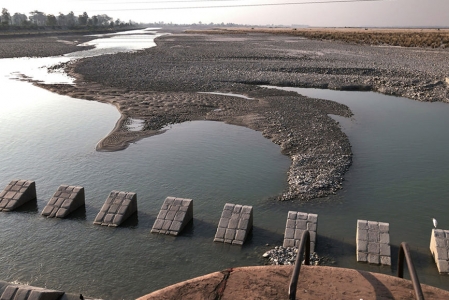This blog post was written in response to the question "Should we build more large dams" as part of a series of responses for World Water Day 2014.
I forget which dam it was, but the anecdote goes that during a public consultation for a major Brazilian dam, one of the dam's developers had quipped that you had to break eggs to make an omelette. To which one of the audience members had replied, "yeah, but it's our eggs and your omelette".
Breaking eggs to make omelettes does not typically dovetail well with the precautionary principle. The principle was first endorsed in 1982, when the World Charter for Nature was adopted by the United Nations General Assembly, while its first international implementation was in 1987 through the Montreal Protocol. Soon after, the principle had been integrated into many other legally binding international treaties such as the Rio Declaration and Kyoto Protocol. It is contained even in the Lisbon Treaty.
Ansar et al's soon-to-be-published paper looks at large dam building from the perspective of cost overruns. Dam building budgets, they say, persistently underestimate actual costs by 96%. As a consequence, there is often no return on investment.
"The typical forecasted benefit-to-cost ratio was 1.4. In other words, planners expected the net present benefits to exceed the net present costs by about 40%. Nearly half the dams suffered a cost overrun ratio of 1.4 or greater breaching this threshold after which the asset can be considered stranded—i.e. its upfront sunk costs are unlikely to be recovered. This is assuming, of course, that the benefits did not also fall short of targets, even though there is strong evidence that actual benefits of dams are also likely to fall short of targets".
Ansar et al's study is restricted to construction costs. The data on which they base their conclusions and recommendations is accessible and available. But dams cost more than construction costs alone. Data on these additional costs is patchy, often highly speculative, and the methodologies for evaluating these costs do not exist.
The costs involved are the downstream costs of hydropower, including, in particular, costs associated with changes to aquatic ecologies, impacts to ecosystem services, changes to sedimentation loads, altered hydrographs and so on. Crucially, those are costs that are not factored into dam feasibility studies (even more immediate costs, such as resettlement or environmental management in close proximity to the dam, are often also excluded from feasibility studies).
There are two key reasons why this matters: first, the rhetoric in favour of dam construction will always argue that the benefits that will emerge from the dam will far outweigh the costs. In turn, this implies that some sort of trade-off analysis must have occurred (otherwise, how would they know?).
The second reason relates to how these unaccounted for costs are distributed. At the coarsest of levels, the implication is that all costs unassociated with dam construction and engineering will be borne by society. While the costs associated with one dam may be relatively modest, it is unclear what happens when you approach this question from the perspective of scale: the modest downstream costs of a hundred dams presumably amounts to something.
Ansar et al's study contains an intriguing, albeit brief, analysis that correlates dam schedule overruns with per capita income. "Countries with a higher per capita income in constant 2000 USD in the year of decision to build tend to have lower schedule overruns than countries with lower per capita income. We concur with the interpretation of Bacon and Besant-Jones (1998, p. 325) that “the best available proxy for most countries is [the] country-per-capita income...[for] the general level of economic support that a country can provide for the construction of complex facilities”.
This result suggests that developing countries in particular, despite seemingly the most in need of complex facilities such as large dams, ought to stay away from bites bigger than they can chew. While in this analysis, low per capita income contributes to a higher risk of project overrun, it also has implications for the ability of these societies to absorb and cope with uncalculated societal and environmental costs.
The evidence would suggest that when we focus on the dam site alone, there is considerable risk of temporal and financial overruns, in turn threatening returns on investment. The evidence would also suggest that individual dams do have significant negative impacts on the environment, although variable impacts on society (provided we exclude affected communities who are almost always adversely affected); there can be no scientific consensus regarding cumulative impacts because the studies needed to evaluate these impacts have largely not been done; and the methodologies to do so remain weak and under-developed.
There exists a sufficient amount of doubt concerning the overall positive benefits of dams that if the precautionary principle were deployed, large dams should not proceed.














Add new comment